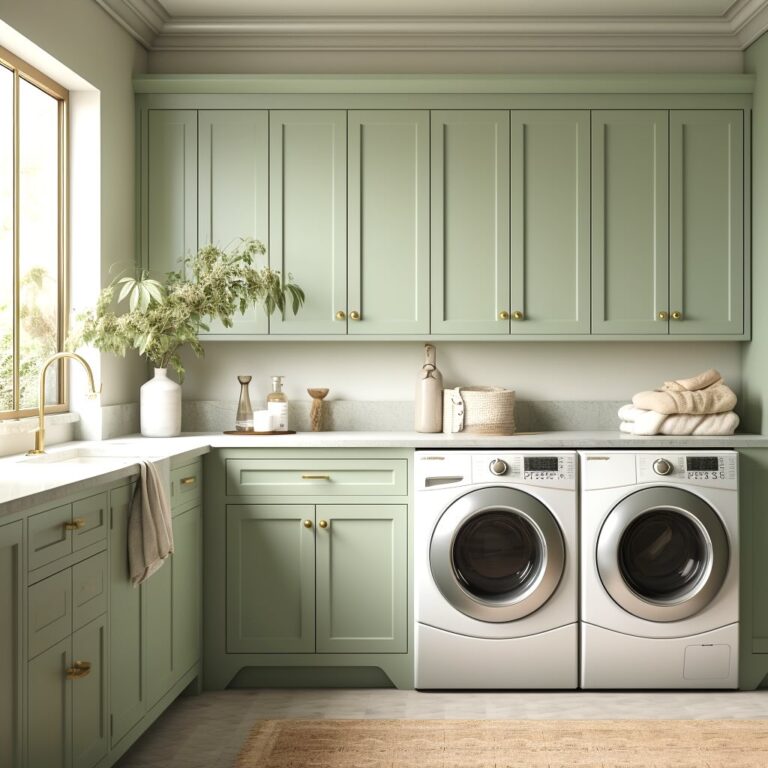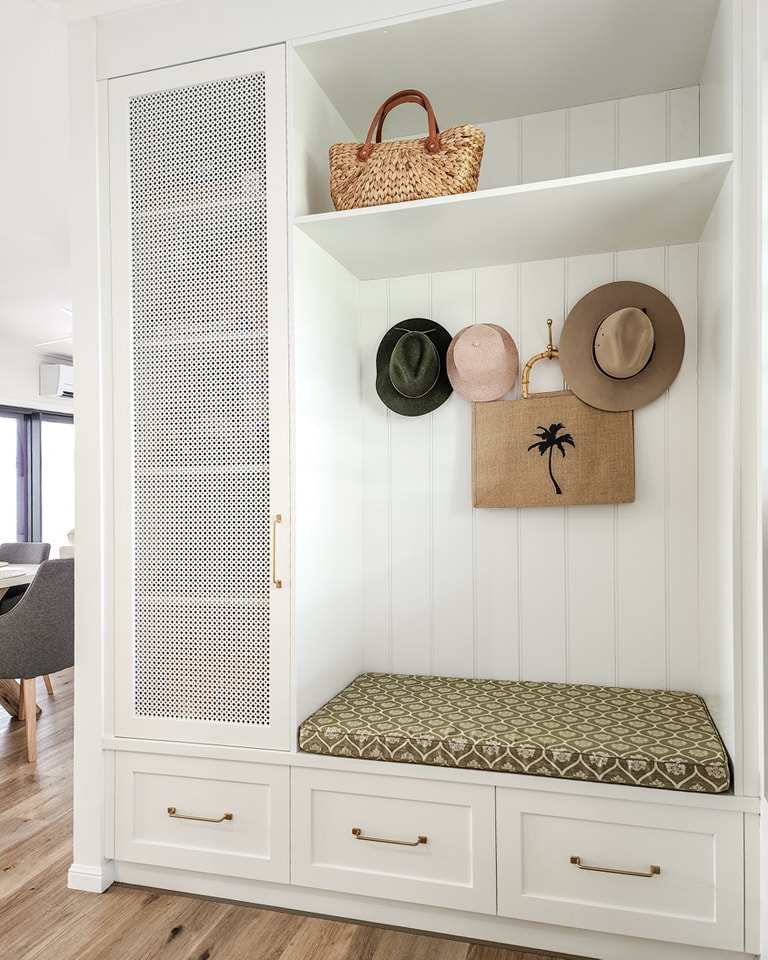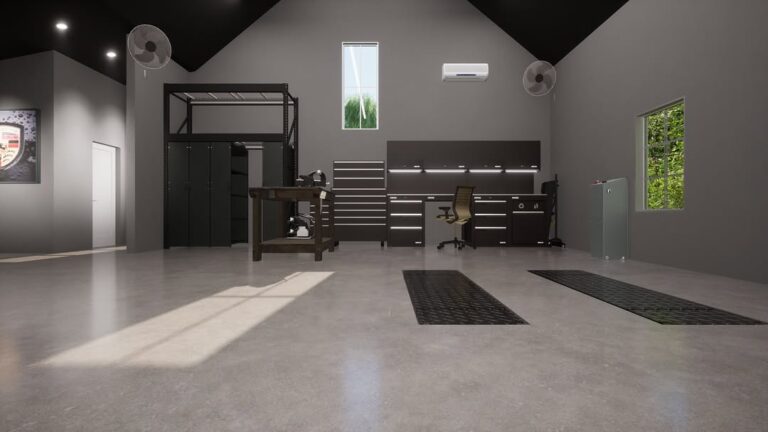17 Montessori Room Ideas to Foster Independence and Creativity
Creating a Montessori-inspired space for your child’s room can have a lasting impact on their growth and development. With the principles of independence, exploration, and learning at the forefront, a Montessori room can encourage a child to engage with their environment and enhance their natural curiosity. Whether you’re redesigning an existing room or setting up a new space, these Montessori room ideas will help you build an inviting and functional environment that promotes a sense of autonomy, creativity, and discovery.
1. Open Shelving for Easy Access
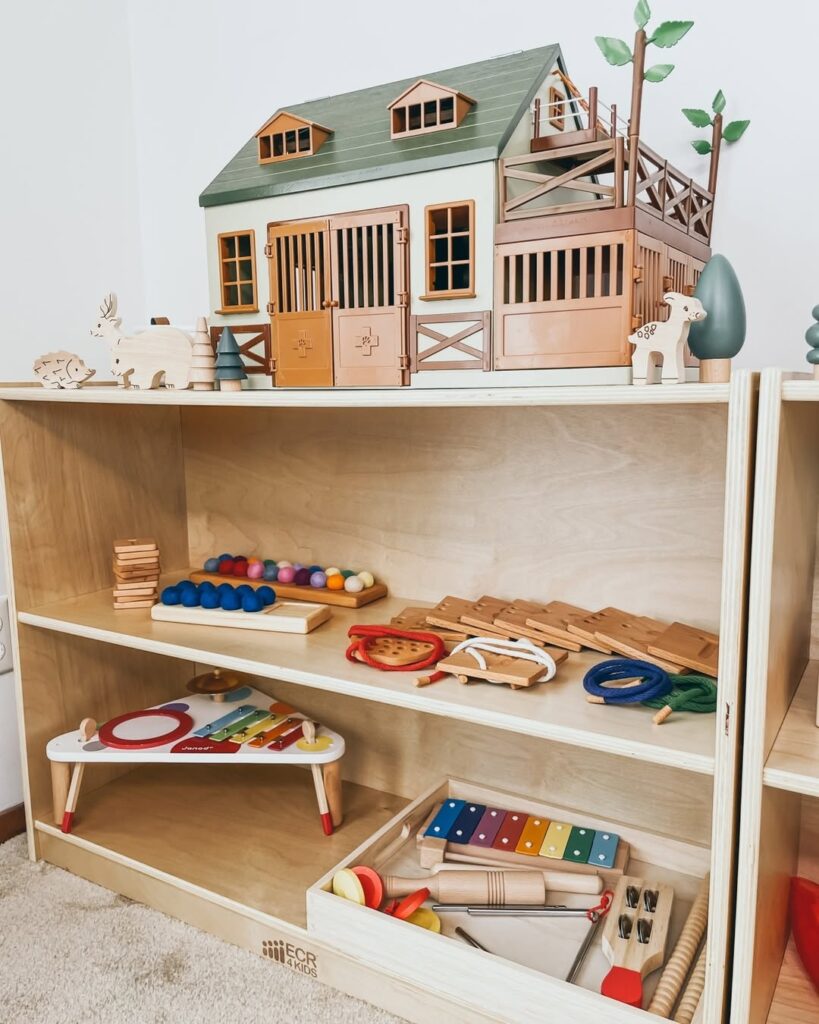
Open shelving is one of the most effective Montessori room ideas, as it promotes independence and self-sufficiency. Unlike traditional toy storage that may involve difficult-to-access boxes or cabinets, open shelving allows children to easily view and select items. This setup encourages them to take responsibility for their belongings and allows them to independently clean up after themselves.
The key here is to keep the shelves at a low height that’s easily accessible to your child. Consider using natural wood shelves that blend seamlessly with the room’s aesthetic. Organize the shelves by grouping items by type, such as books, art supplies, or toys, so your child can make decisions about what they want to engage with. This also helps keep the room organized and visually uncluttered, making it easier for your child to focus on one activity at a time.
Additionally, you can rotate the items on the shelves based on your child’s interests, ensuring that the environment remains stimulating and aligned with their developmental stage. The goal is to create an environment where your child feels empowered to make choices and explore on their own.
2. Child-Sized Furniture
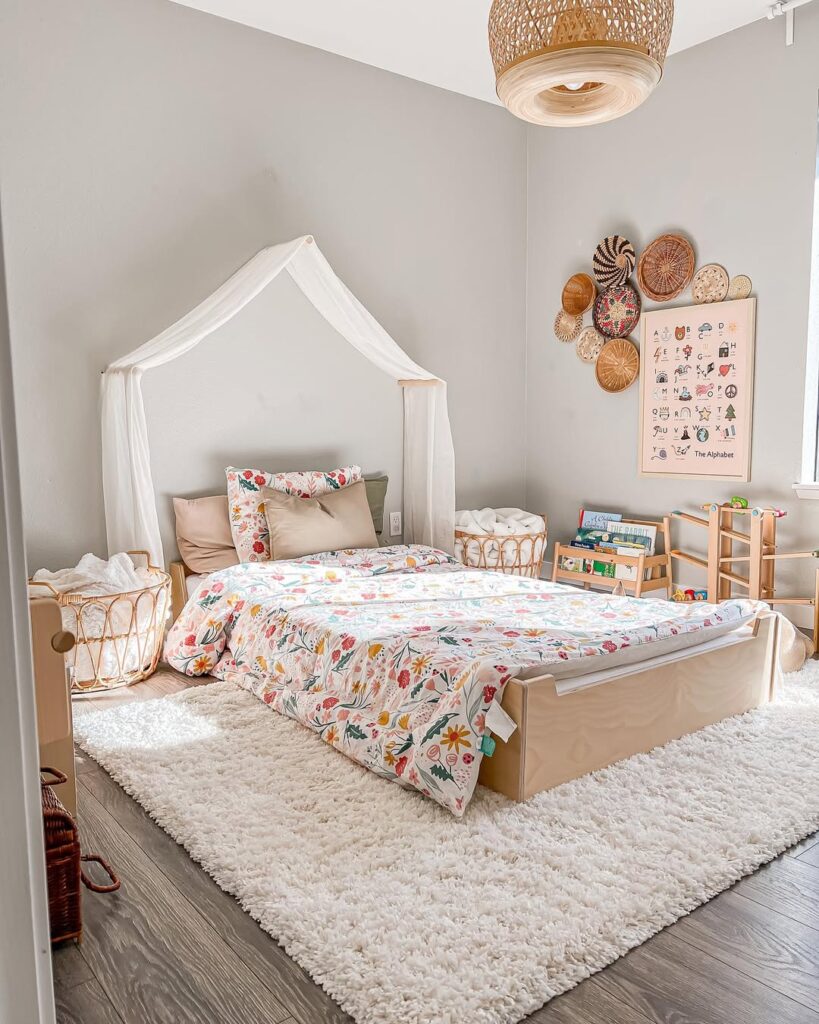
To create a truly Montessori-inspired room, child-sized furniture is essential. This allows children to feel in control of their space, giving them the freedom to move, play, and interact comfortably. Choose furniture that is both functional and scaled to their size, such as a small table and chair set or a child-sized bed with low-profile frames.
The Montessori approach emphasizes accessibility, so pieces should allow your child to easily sit down, get up, and engage in activities without needing assistance. This can include a small desk or craft table where they can sit and work, or a low shelf for their books and toys. A low bed, like a floor bed, is also a great addition, as it gives your child the freedom to get in and out of bed on their own.
By investing in child-sized furniture, you are promoting a sense of autonomy and creating a room that is inviting and conducive to learning. These pieces are not only practical but also reinforce the Montessori philosophy of allowing children to engage with their environment independently.
3. Natural Light and Airy Spaces

A well-lit room is key to fostering a positive, stimulating environment for a child. Natural light has a calming effect and contributes to a healthy atmosphere for learning and exploration. The Montessori method emphasizes a connection to nature, so try to incorporate as much natural light as possible into the room’s design.
Maximize window space by choosing light, breathable curtains or blinds that can be adjusted to let in sunlight during the day. If your child’s room has smaller windows, consider using mirrors to reflect light and create the illusion of a brighter, larger space. Natural materials, such as wood and linen, further enhance the organic feel of the room and bring the outdoors inside.
By ensuring the room is airy and well-lit, you are encouraging an environment where your child can focus on activities without feeling distracted or confined. A bright, inviting space is ideal for fostering creativity, calmness, and concentration.
4. Low-Profile Storage Bins and Baskets
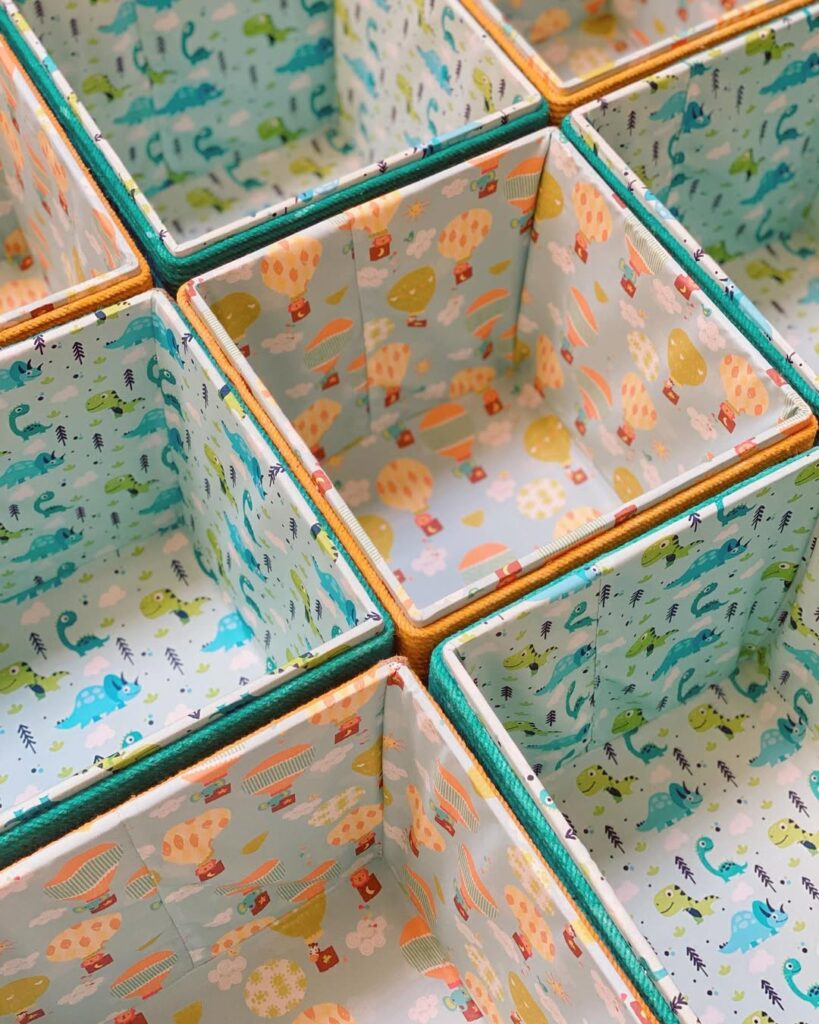
Montessori room designs prioritize organization and simplicity. Using low-profile storage bins and baskets allows children to independently access their belongings and tidy up with ease. Rather than relying on high cabinets or complicated storage systems, opt for open, low bins that are within arm’s reach of your child.
Choose storage solutions that are easy to open and close, such as woven baskets or clear plastic bins, so children can identify and retrieve what they need. You can label the bins with pictures or words for older children to encourage language development and organization skills. These types of storage options also help keep the room clutter-free, making it easier for children to focus on their activities.
This setup not only promotes independence but also helps children develop a sense of responsibility for keeping their space organized. By making storage accessible, you encourage your child to maintain their room and feel confident in their ability to manage their environment.
5. A Cozy Reading Nook
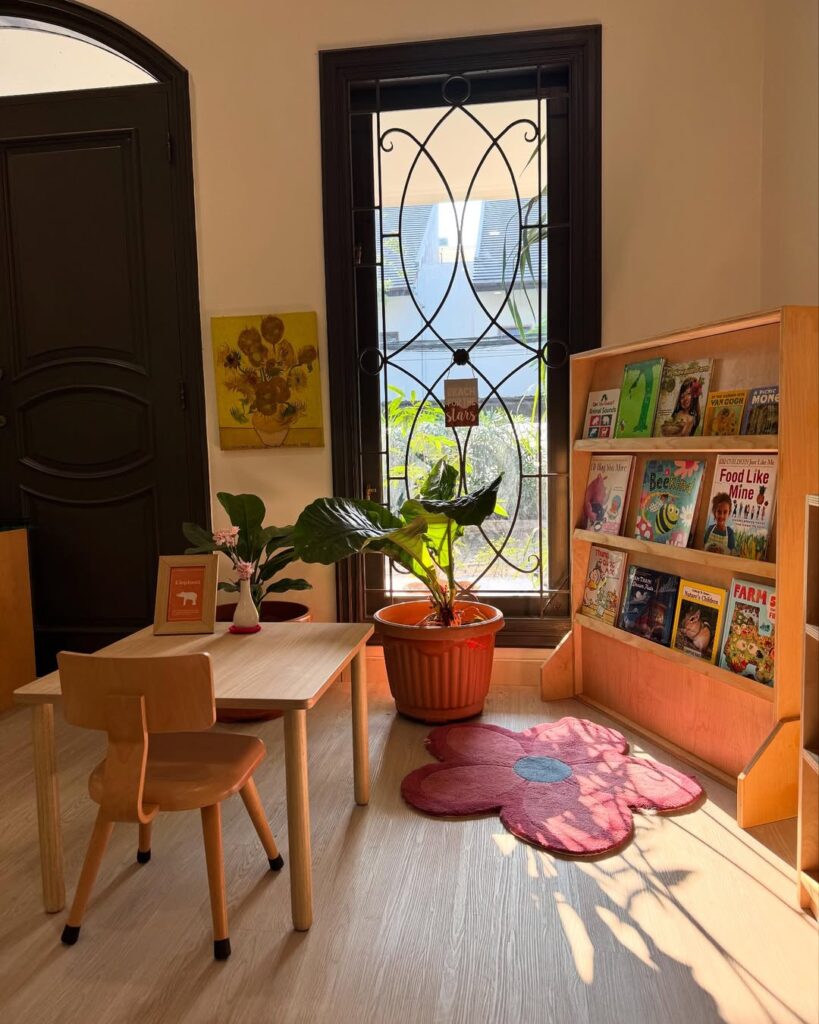
A Montessori room encourages learning and curiosity, and one of the best ways to foster these qualities is by creating a cozy reading nook. Providing a dedicated space for reading and relaxation allows children to explore books independently and fosters a love of reading from an early age.
Design your reading nook with comfort in mind—soft cushions, a small rug, and a bookshelf within easy reach are essential elements. The space should feel inviting, with enough room for your child to sit and flip through books without distractions. Consider using soft lighting, such as a table lamp or string lights, to create a calm, quiet atmosphere that encourages focus.
By dedicating a corner of the room to reading, you are not only giving your child a space for relaxation but also promoting an important skill. Reading regularly helps build literacy skills and contributes to cognitive development, making this idea an integral part of a Montessori-inspired room.
6. Montessori-Inspired Art Display
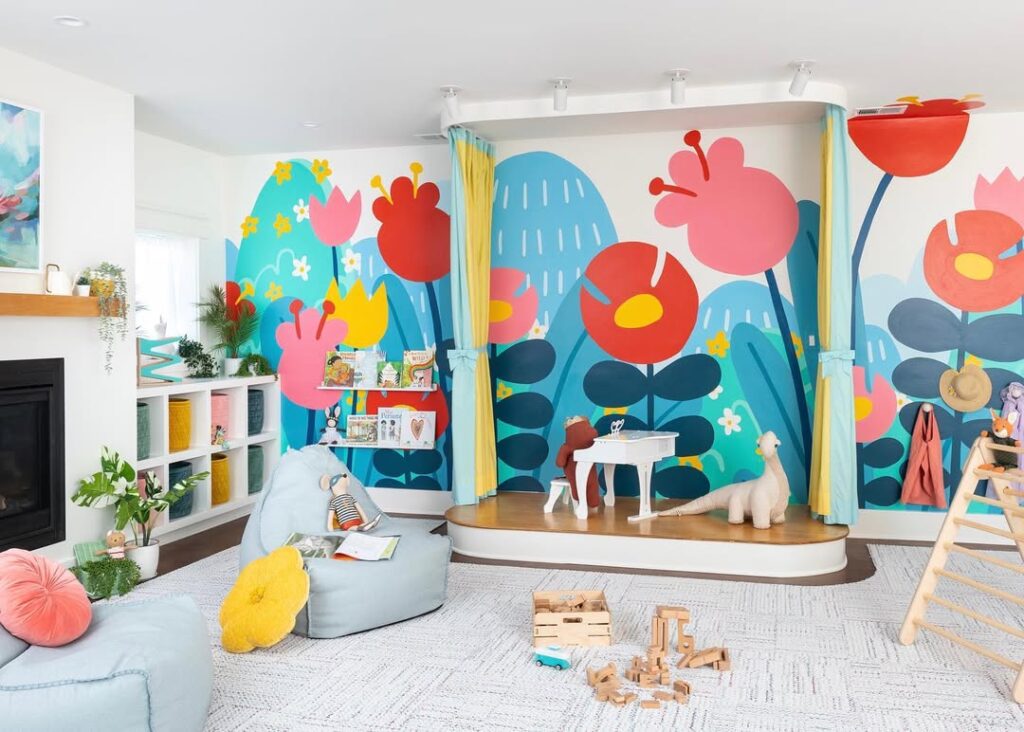
Art and creativity are key aspects of the Montessori approach, and what better way to inspire your child’s imagination than by creating a Montessori-inspired art display in their room? This can be a simple yet effective way to celebrate their creativity and make them feel proud of their work.
Install a rotating display system, such as a wire with clips or a corkboard, where you can easily swap out pieces of artwork as your child creates new ones. This allows your child to see their work displayed prominently and gives them the opportunity to reflect on their progress and achievements. Additionally, this encourages them to take ownership of their creations and feel confident in sharing their work.
Incorporating art into the room not only nurtures creativity but also helps children develop fine motor skills, problem-solving abilities, and self-expression.
7. Natural Materials for Furniture and Decor
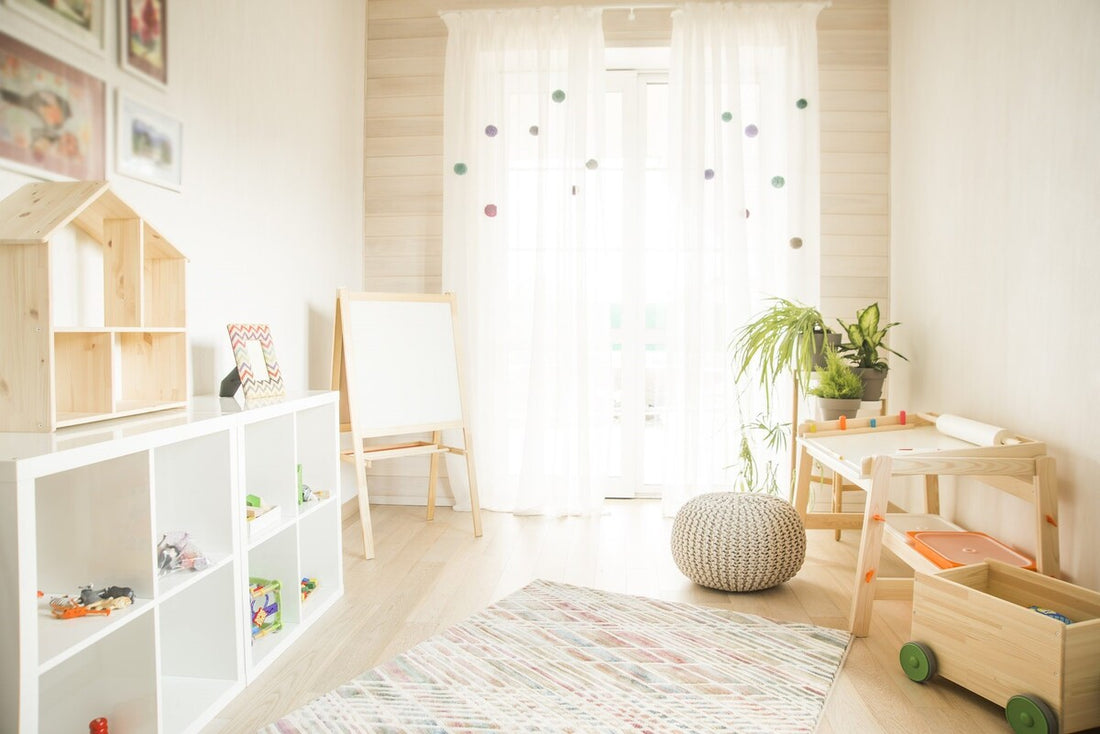
The Montessori method places a strong emphasis on the use of natural materials, and this is a key element of a Montessori-inspired room. When selecting furniture and decor, opt for materials like wood, linen, cotton, and wool, which not only look beautiful but also contribute to a warm, inviting atmosphere.
Natural materials are sustainable, non-toxic, and provide a sense of connection to the earth. Wooden furniture, such as a simple bed frame or small dresser, adds warmth and texture to the room. Linen curtains and wool rugs create a cozy, tactile environment that encourages children to engage with their surroundings.
By incorporating these materials, you are fostering a sense of mindfulness and connection to nature, which is a core principle of the Montessori philosophy.
8. A Child-Sized Workbench
A child-sized workbench is a fantastic addition to a Montessori room, especially if you want to inspire hands-on learning and problem-solving. A small workbench allows your child to engage in real-life activities such as building, sorting, or organizing, which helps develop their fine motor skills and independence.
Look for a simple, sturdy workbench with tools that are safe for children to use. You can start with basic items like a hammer, screwdriver, and measuring tape, and encourage your child to engage in simple projects like building with blocks or creating small crafts. Over time, you can introduce more complex tools and activities, depending on your child’s age and interests.
A workbench also fosters a sense of responsibility, as your child learns to care for their tools and keep their workspace organized. It’s a fun and educational way to encourage creativity while promoting life skills.
9. A Practical Life Area

Incorporating a practical life area in your Montessori room is a great way to help children develop everyday life skills and promote independence. This area can include items like a small broom and dustpan, a child-sized mop, or even a mini kitchen set. The idea is to allow children to participate in daily chores and activities, giving them a sense of responsibility and accomplishment.
Set up this area with age-appropriate tools and materials that are easy for your child to handle. For example, a small apron and towel can encourage your child to help with cleaning or setting the table. A mini vacuum or dusting set can inspire your child to take part in housekeeping tasks, while also developing hand-eye coordination and fine motor skills.
By allowing your child to take part in practical life activities, you are reinforcing their independence and providing them with essential skills that will serve them throughout life.
10. Calm and Neutral Color Palette
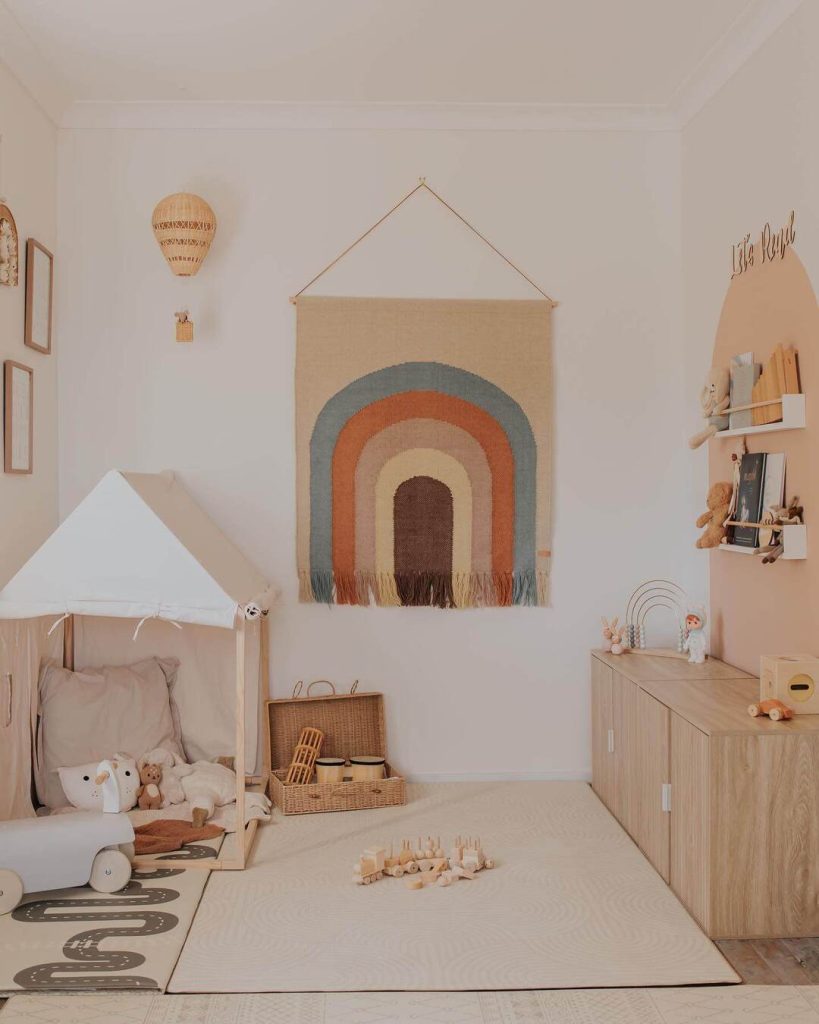
When designing a Montessori room, a calm and neutral color palette is key to creating a peaceful environment that encourages focus and relaxation. Soft shades of white, beige, gray, and pastel colors are ideal for creating a serene atmosphere that promotes concentration and comfort.
Avoid bold, overly stimulating colors that may distract your child from their activities. Instead, choose gentle hues that create a sense of calm and help to visually expand the room. You can add pops of color through toys, artwork, or accent pieces, but keep the overall tone of the room subtle and soothing.
A neutral palette also makes it easier to incorporate natural materials and organic textures, which are central to the Montessori philosophy. The goal is to create a room where your child feels grounded and at ease, ready to engage with their environment and explore new activities.
11. A Montessori Mirror for Self-Discovery
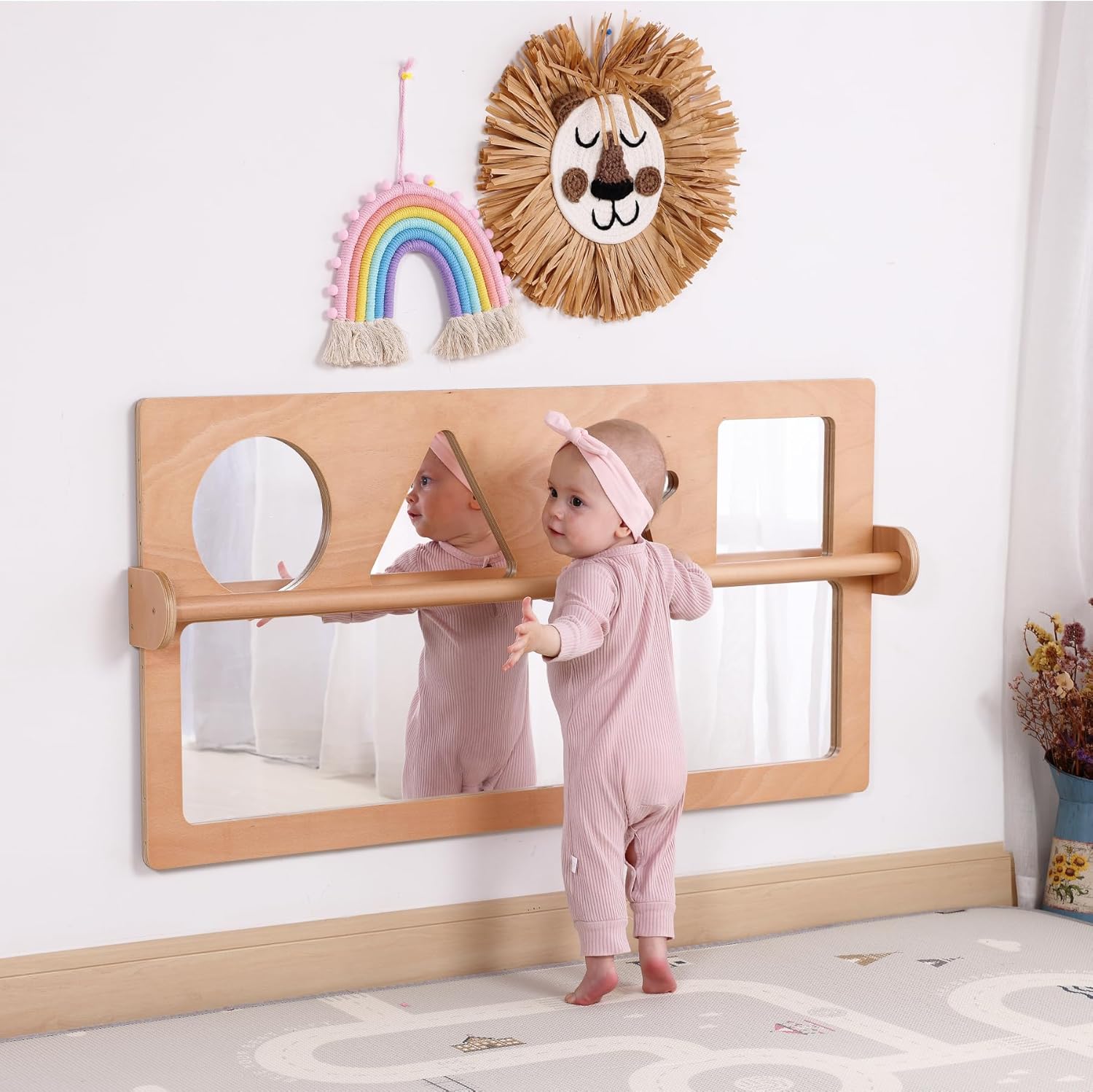
A Montessori mirror is a wonderful tool to help children learn more about themselves and their surroundings. It’s not just about seeing their reflection, but rather using the mirror to explore movement, facial expressions, and self-awareness. By placing a child-sized mirror at an accessible height, children can engage in activities such as practicing facial expressions, observing their actions, or simply being curious about their reflection.
The mirror can also be a part of a larger area for self-discovery, where your child might explore different objects or play games that require looking into the mirror. A Montessori mirror encourages independence, as children can check their appearance, experiment with movements, or even try on different expressions and postures.
Mirrors are also fantastic for improving spatial awareness and motor skills. You might notice your child becoming more aware of their body movements, gestures, and even their emotions as they observe themselves in the mirror.
12. Simple, Interactive Wall Art

When thinking of Montessori room ideas, it’s important to incorporate interactive elements that engage a child’s sense of touch and exploration. Simple, interactive wall art is a great way to incorporate this concept into the room. For instance, consider wall decals that children can touch, reposition, or interact with, such as tactile shapes, letters, or numbers.
You could also add a wall-mounted chalkboard or whiteboard, allowing your child to draw and express themselves freely. These types of art installations encourage creativity and provide an outlet for imagination, while still keeping the space organized and functional.
The key to interactive wall art is that it should be simple, open-ended, and something that invites your child to play and explore on their own terms. It should be placed at an accessible height for your child to easily interact with, providing endless opportunities for creative learning.
13. A Sensory Area for Exploration
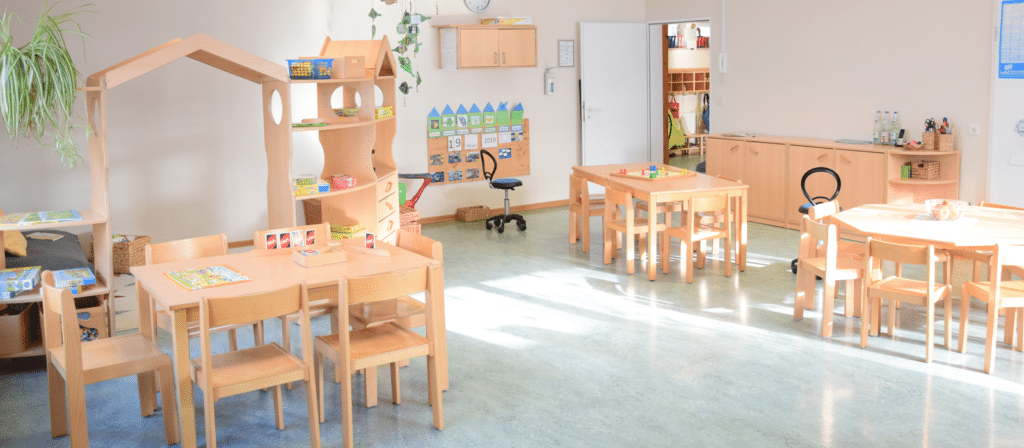
A sensory area is an important component of a Montessori room, as it helps children engage with the world through their senses. Sensory play stimulates cognitive growth, fine motor skills, and language development. This can be as simple as a small corner with various textures, objects, or materials to explore.
Consider a basket with different fabrics, such as velvet, cotton, or wool, for tactile exploration. You could also incorporate items like wooden blocks, glass pebbles, or natural materials like pinecones or rocks. The idea is to provide an assortment of objects that engage a child’s sense of touch, sight, and sound.
The sensory area should be accessible and safe for your child to explore. By creating an environment that encourages hands-on discovery, you promote cognitive and sensory development in a way that aligns with Montessori principles.
14. Nature-Inspired Decor

Montessori education values the connection to nature, so incorporating nature-inspired decor into your child’s room can greatly enhance the Montessori experience. Think wooden elements, plants, natural fibers, and earth tones—materials that evoke a sense of calm and natural beauty.
Adding a few plants to the room not only improves air quality but also teaches children about responsibility, as they can be involved in taking care of them. Consider low-maintenance, child-safe plants like succulents or ferns. Additionally, you could add natural wood shelves, woven baskets, and linen curtains to contribute to a warm, earthy atmosphere.
By filling the room with natural, organic elements, you encourage a deeper connection to the environment and foster a sense of respect for the world around them. This also makes the space feel grounded and promotes creativity and calmness.
15. A Quiet Reflection Space

A quiet reflection space is an essential part of a Montessori room, giving children a peaceful area where they can retreat for self-regulation, relaxation, or quiet activities. This space can be equipped with soft cushions, a small rug, and books to allow your child to decompress or focus on a solo activity.
This quiet area can also be a great place for meditation, mindfulness exercises, or even deep breathing exercises, all of which contribute to emotional regulation and mental well-being. The idea is to provide a safe, serene environment that encourages reflection and inner peace, allowing children to recharge when they feel overwhelmed or need a break.
Setting up a space that fosters emotional well-being aligns with the Montessori philosophy, which encourages children to develop their emotional intelligence and self-awareness in a supportive environment.
16. A Practical Science Corner
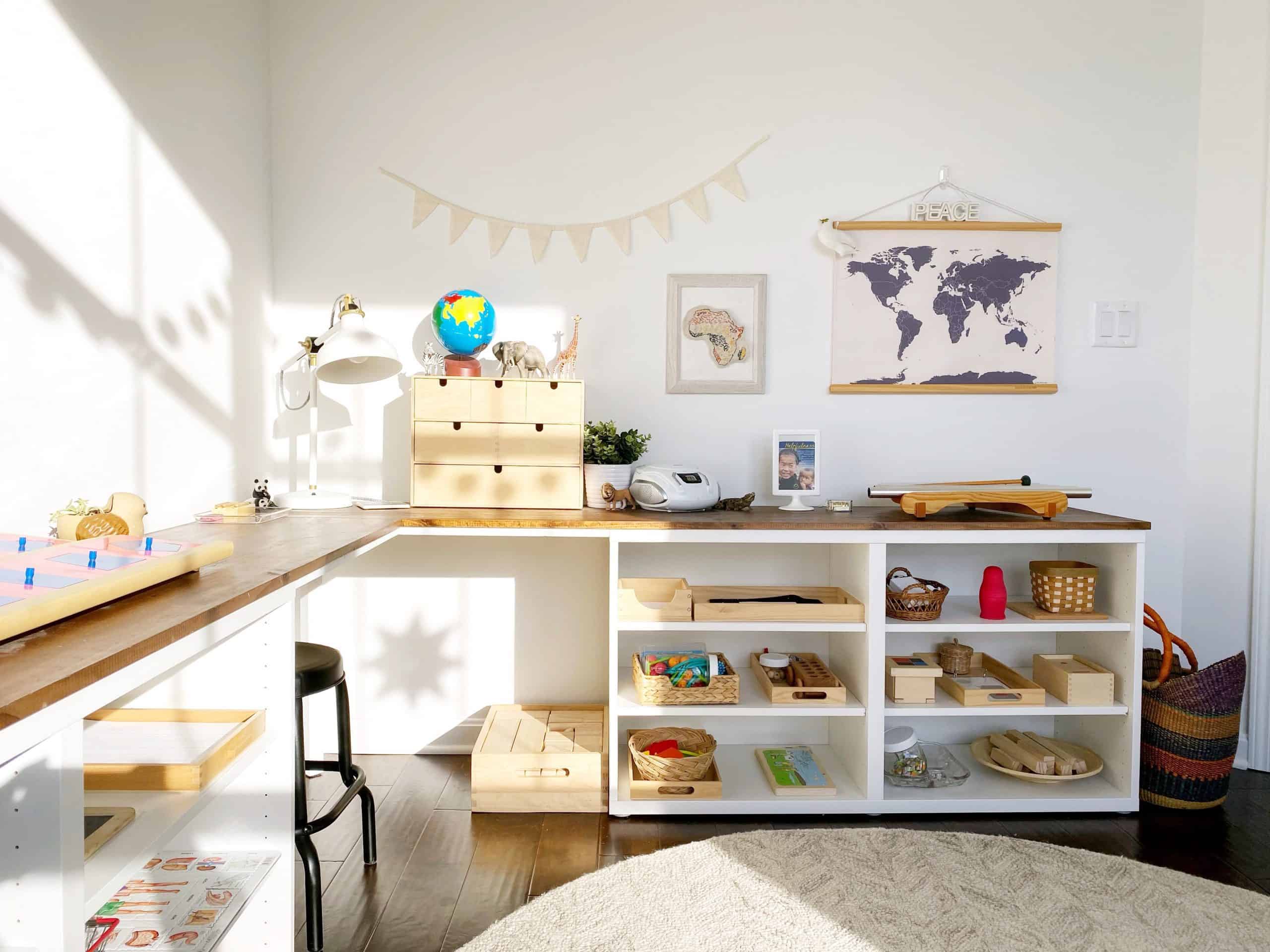
A practical science corner is a fantastic Montessori room idea that encourages curiosity and discovery. This space could feature simple science tools like magnifying glasses, small plants, or even a set of natural materials like leaves, rocks, or shells for examination. The goal is to foster a sense of wonder and exploration about the natural world.
This corner can be paired with educational books on nature, animals, and plants, allowing your child to dive deeper into the subjects that interest them. By offering tools that encourage hands-on exploration, such as a magnifying glass or simple microscopes, you’re inspiring your child to make observations and discoveries independently.
A practical science corner not only helps with learning about nature but also encourages critical thinking, problem-solving, and the development of scientific inquiry skills.
17. A Montessori-Style Floor Bed
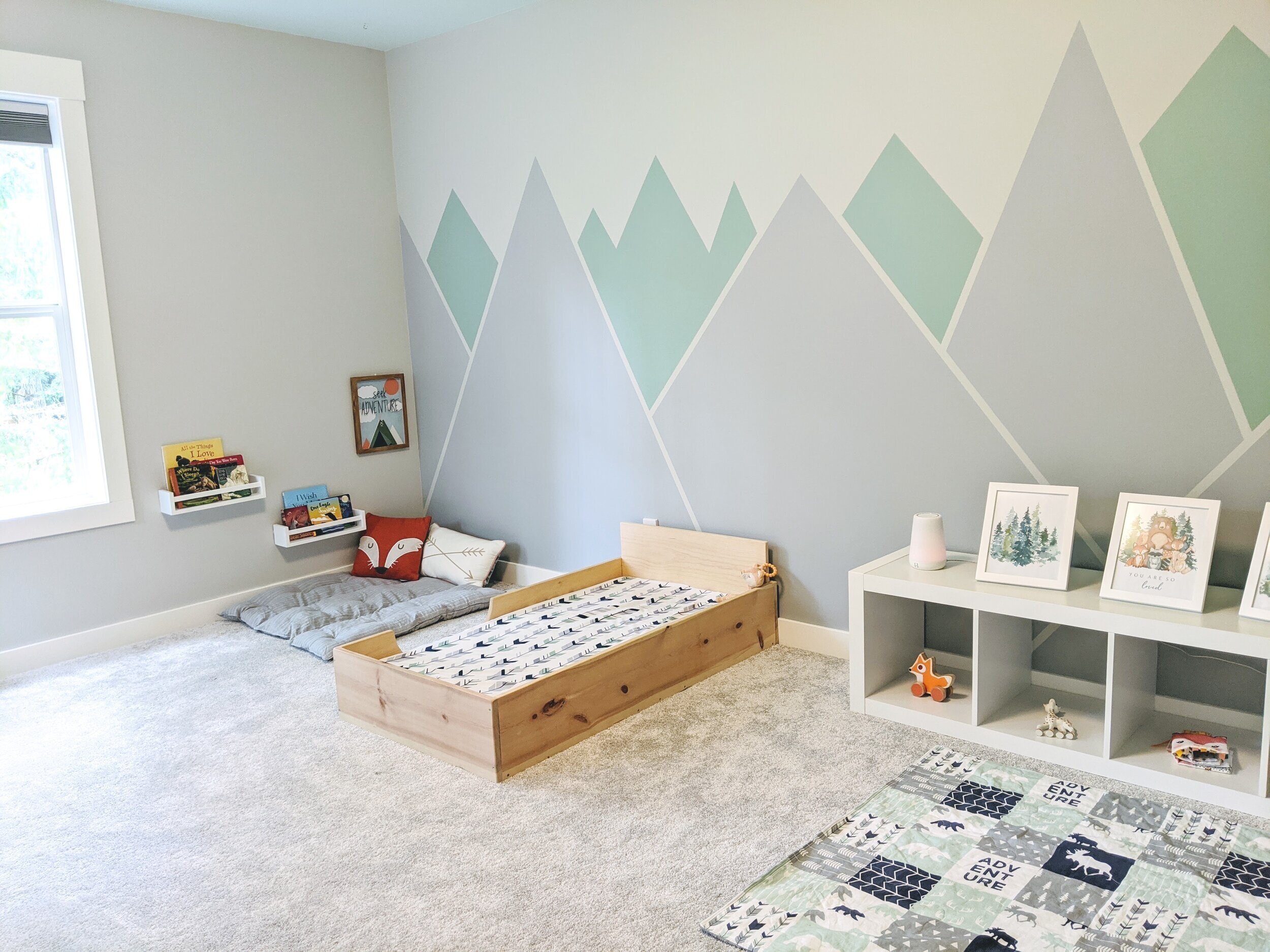
A Montessori-style floor bed is a central feature in many Montessori rooms, emphasizing the idea of independence and freedom of movement. By placing the bed on the floor, children are given the freedom to get in and out of bed on their own, which promotes autonomy and confidence.
Floor beds also align with the Montessori philosophy of avoiding cribs or high-sided beds that can limit a child’s freedom to move. The simple design encourages exploration and the ability to make choices—such as deciding when to wake up or when to go to sleep—by giving children more control over their space.
Incorporating a floor bed into your child’s room also creates a calming and inviting environment, where they feel safe and supported. You can enhance the space around the bed with soft rugs, low shelves, and natural elements that create a serene sleeping area conducive to restful nights and easy mornings.
Conclusion
Designing a Montessori-inspired room goes beyond simply arranging furniture—it’s about creating an environment that fosters independence, creativity, and a deep sense of self. The 17 Montessori room ideas explored here provide you with a variety of ways to transform your child’s space into a place where they can explore, learn, and grow at their own pace.
By incorporating principles like child-sized furniture, natural materials, open shelving, and sensory play, you’re giving your child the tools to become an active participant in their own learning and development. A Montessori room isn’t just about creating a beautiful space—it’s about nurturing your child’s sense of autonomy, curiosity, and inner drive to explore the world around them.
Whether you are setting up a new space or reimagining an existing room, the Montessori philosophy invites you to think carefully about the design and layout, ensuring it supports the development of essential life skills. This approach not only benefits children during their early years but lays the groundwork for a lifelong love of learning and discovery.



